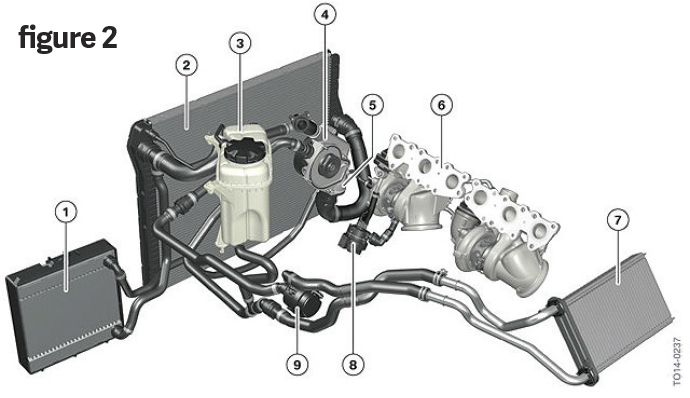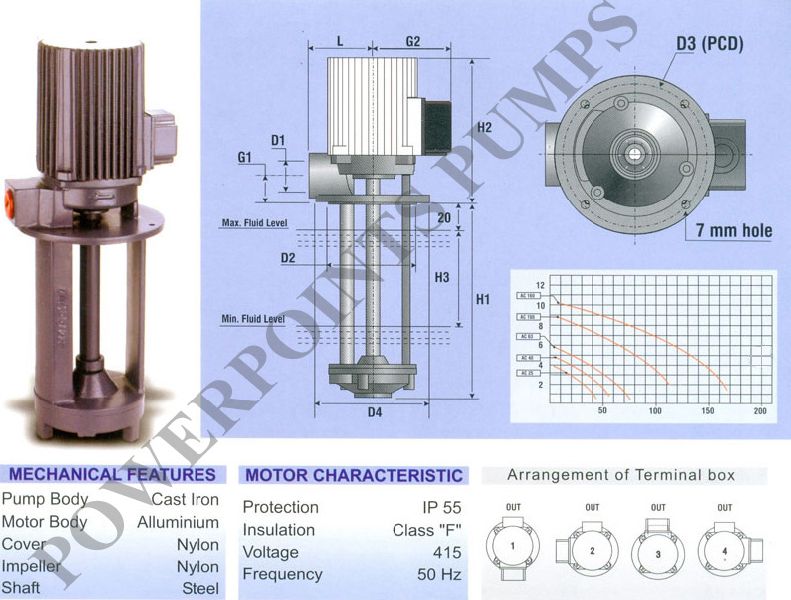In the heart of any vehicle’s cooling system lies the coolant pump, acting as the silent guardian of engine temperature regulation. When this crucial component falters, the consequences can be catastrophic. In this comprehensive guide, we will unravel the mysteries of coolant pump control, providing you with the knowledge and tools to diagnose, troubleshoot, and repair these enigmatic devices. Embark on a journey to conquer the intricacies of coolant pumps, empowering you to safeguard the well-being of your vehicle’s vital organs.

Image: www.import-car.com
Coolant Pump Control: A Cornerstone of Engine Health
The coolant pump, a veritable powerhouse of the cooling system, tirelessly circulates coolant throughout the engine’s intricate network of passages and components. This unrelenting flow absorbs heat from these components, carrying it away to the radiator where it is dissipated into the atmosphere. Without this constant circulation, the engine would succumb to the clutches of overheating, potentially leading to catastrophic failures.
Diagnosing Coolant Pump Woes: A Detective’s Guide
A faulty coolant pump can manifest in a myriad of ways, each one a subtle clue in the diagnostic puzzle. Keep a keen eye out for telltale signs such as:
-
Overheating: An engine that runs excessively hot, even under normal operating conditions, may be the victim of a compromised coolant pump.
-
Coolant Leaks: Inspect the area around the coolant pump for any signs of leakage. A steady drip or visible puddles may indicate a faulty pump gasket or seal.
-
Visible Pump Damage: In severe cases, the coolant pump itself may exhibit physical damage. Look for cracks, corrosion, or physical distortions that could impair its function.
-
Unusual Noises: A healthy coolant pump operates silently, any unusual noises, such as grinding, whining, or rattling, could signal impending failure.
Troubleshooting Techniques: Unmasking the Culprit
Once you suspect a coolant pump issue, it’s time to delve deeper into the troubleshooting process. Employ these tried-and-tested techniques:
-
Check Coolant Levels: A simple but often overlooked step, verify the coolant levels in the reservoir. Low coolant levels can starve the pump, leading to overheating and reduced efficiency.
-
Inspect Belts and Pulleys: The coolant pump is typically driven by a belt or pulley. Inspect these components for any signs of wear or damage that could hinder pump operation.
-
Test Electrical Connections: Electrical issues can disrupt the power supply to the coolant pump. Check all electrical connections for corrosion, loose wires, or damaged components.
-
Perform a Pressure Test: A pressure test can reveal leaks in the cooling system, including those originating from the coolant pump. Connect a pressure tester to the cooling system and pressurize it to identify any points of failure.

Image: www.exportersindia.com
Repair and Replacement: Restoring Pump Performance
If your troubleshooting efforts confirm a faulty coolant pump, the next step is to determine whether repairs are feasible or if replacement is necessary.
-
Repairs: In some cases, minor pump issues, such as worn bearings or seals, can be repaired. However, for more severe damage, replacement is the recommended course of action.
-
Replacement: Replacing a coolant pump is a more involved procedure but is often necessary to restore optimal cooling system function. Consult a qualified mechanic for professional assistance with this task.
How To Fix Coolant Pumps Control
Conclusion: Empowering You with Coolant Pump Mastery
Unlocking the secrets of coolant pump control is essential for maintaining the health of your vehicle’s engine. By equipping yourself with the knowledge and skills outlined in this guide, you empower yourself to diagnose, troubleshoot, and repair these crucial components, ensuring seamless and worry-free driving experiences. Remember, a well-maintained coolant pump is the cornerstone of a healthy engine, safeguarding its longevity and allowing you to embrace the open road with confidence.